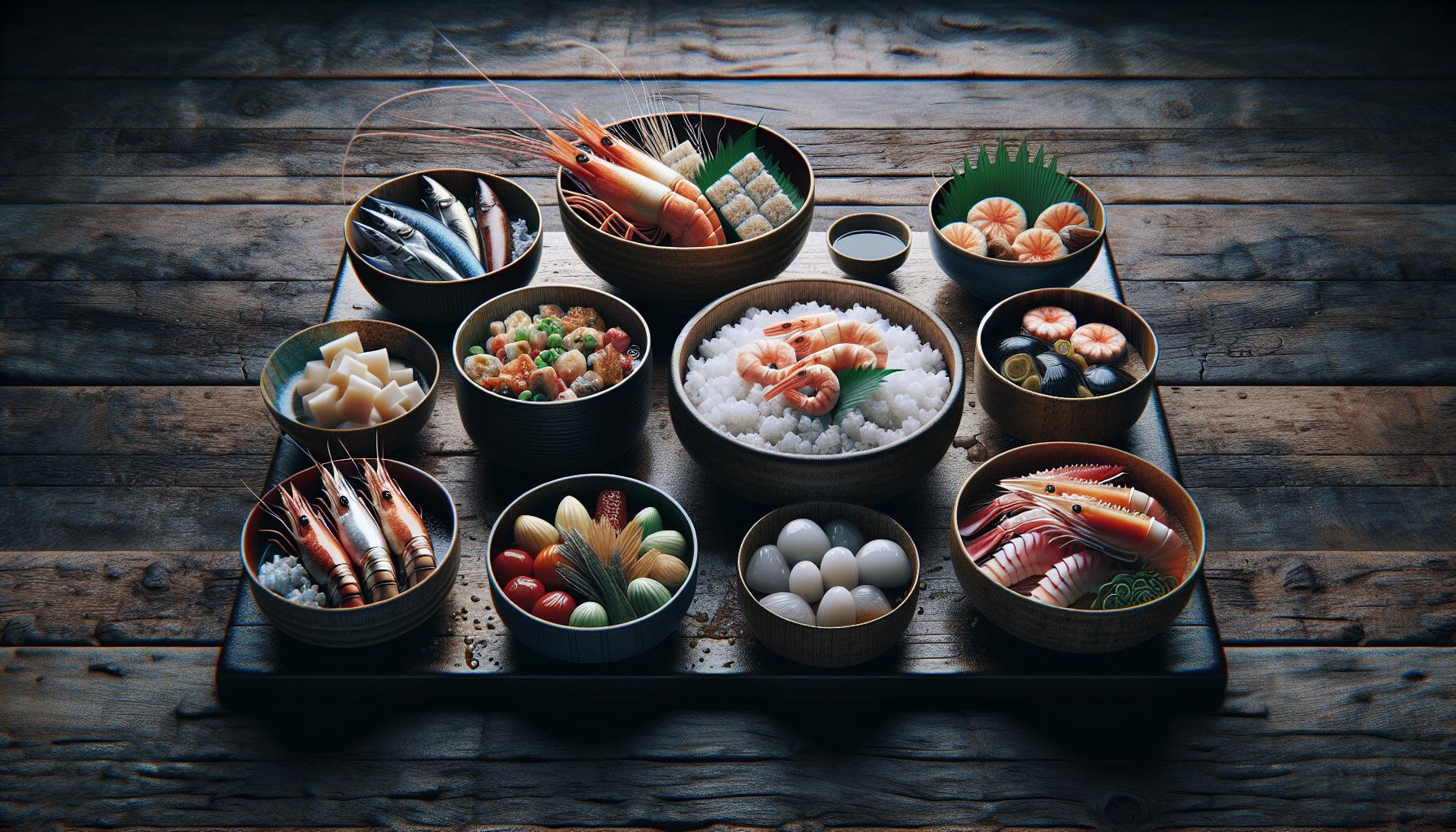Across the globe people have been arguing about whose grandma’s cooking is the healthiest – but let’s settle this debate once and for all. From Mediterranean olive oils to Japanese seaweed wraps cultures worldwide have developed unique dietary patterns that keep their populations thriving well into their golden years.
Some nations have cracked the code of longevity through their traditional cuisine while others might want to reconsider their deep-fried everything approach. Scientists and nutritionists have identified several cultural diets that stand out for their impressive health benefits high nutrient density and correlation with lower rates of chronic diseases. These dietary patterns often reflect centuries of wisdom passed down through generations and are deeply intertwined with cultural practices and local ingredients.
Which Culture Has the Healthiest Food
A healthy food culture encompasses traditional dietary patterns that promote longevity through nutrient-rich whole foods. Different regions demonstrate distinct approaches to balanced nutrition based on their indigenous ingredients cultural practices.
Key Elements of Healthy Food Cultures
Healthy food cultures share these essential characteristics:
- Emphasize whole unprocessed ingredients like fresh vegetables fruits grains
- Practice portion control through smaller serving sizes traditional dishware
- Incorporate fermented foods such as kimchi yogurt miso
- Focus on plant-based protein sources including legumes nuts seeds
- Use minimal added sugars refined carbohydrates processed foods
Cultural Food Preparation Methods
Traditional cooking techniques preserve nutrients through:
- Slow cooking methods that retain vitamins minerals
- Fermentation processes increasing probiotic content
- Steam-based cooking reducing the need for added fats
- Raw food preparation maintaining enzyme activity
- Herb spice combinations enhancing nutritional benefits
- Family-style meals encouraging mindful eating
- Regular mealtimes establishing healthy eating patterns
- Social connections during food preparation consumption
- Knowledge transfer of traditional cooking methods
- Celebration of seasonal local ingredients
| Healthy Food Culture Elements | Benefits |
|---|---|
| Traditional cooking methods | Preserves nutrients |
| Family-style dining | Promotes portion control |
| Seasonal ingredients | Maximizes nutritional value |
| Fermented foods | Enhances gut health |
| Communal eating | Supports mindful consumption |
Mediterranean Diet: The Gold Standard

The Mediterranean diet exemplifies a balanced eating pattern practiced across Greece, Italy, Spain & Southern France. Research consistently ranks this dietary approach as the healthiest worldwide, supported by extensive scientific studies spanning 60+ years.
Key Components of Mediterranean Cuisine
Mediterranean cuisine centers on plant-based ingredients with specific proportions:
- Extra virgin olive oil serves as the primary fat source (3-4 tablespoons daily)
- Fresh vegetables comprise 3-4 servings per meal
- Whole grains appear in every main meal (2-3 servings)
- Legumes feature 3-4 times weekly
- Fish or seafood dominates protein choices (2-3 times weekly)
- Fresh fruits create natural dessert options (1-2 servings daily)
- Nuts & seeds provide healthy fats (30g daily)
- Red wine accompanies meals in moderation (1 glass daily)
- Red meat appears minimally (2-3 times monthly)
Health Benefits and Longevity
Mediterranean populations demonstrate remarkable health outcomes:
- 30% lower heart disease risk
- 25% reduced risk of cognitive decline
- 20% decreased cancer mortality rates
- 13% lower risk of Parkinson’s disease
- 40% higher life expectancy in Blue Zones
| Health Metric | Risk Reduction |
|---|---|
| Heart Disease | 30% |
| Cognitive Decline | 25% |
| Cancer Mortality | 20% |
| Parkinson’s Disease | 13% |
| Life Expectancy | +40% |
Research links these benefits to anti-inflammatory compounds in olive oil, antioxidants in fresh produce & omega-3 fatty acids in fish. The combination of these elements creates a synergistic effect on cellular health & longevity.
Traditional Japanese Dietary Patterns

Traditional Japanese cuisine emphasizes balance, variety, and seasonal ingredients, incorporating small portions of diverse foods in each meal. This dietary pattern stems from centuries-old culinary practices that prioritize nutritional harmony and mindful eating.
Balance and Portion Control
Japanese meal structure follows the “ichiju-sansai” principle, consisting of one soup and three side dishes served with rice. Each meal contains 5-7 different items served in small portions on separate plates or bowls. The traditional Japanese approach uses the “hara hachi bu” eating philosophy, which involves eating until 80% full. This practice reduces overall calorie intake by 20% compared to Western eating habits.
Sea-Based Nutrition
Japanese cuisine centers on seafood consumption, with fish appearing in 4-5 meals per week. The diet includes various sea vegetables like nori, wakame, and kombu, providing essential minerals including iodine, calcium, and iron. Marine-based proteins contribute to the Japanese population’s high omega-3 fatty acid intake, reaching 1-2 grams daily. Studies link this seafood-rich diet to Japan’s 83-year average life expectancy, one of the highest globally.
| Dietary Component | Daily Portion Size | Weekly Frequency |
|---|---|---|
| Fish & Seafood | 3-4 oz | 4-5 times |
| Sea Vegetables | 1-2 tbsp | 5-7 times |
| Small Plates | 1/2 cup each | 15-21 items |
| Rice Portions | 1/2 – 3/4 cup | 14-21 times |
Nordic Diet’s Rising Influence

The Nordic diet emphasizes traditional foods from Scandinavia, incorporating nutrient-dense ingredients from Denmark, Norway, Sweden, Finland, and Iceland. This dietary pattern gained international recognition for its focus on environmental sustainability and health benefits, showing a 25% reduction in cardiovascular disease risk among adherents.
Seasonal and Local Focus
Nordic cuisine centers on seasonal ingredients found in northern climates, including berries, root vegetables, wild mushrooms, whole grains, fatty fish. Fresh produce harvests align with natural growing cycles: leafy greens in spring, berries in summer, root vegetables in fall, preserved foods in winter. Local fish varieties like herring, mackerel, salmon provide essential omega-3 fatty acids throughout the year. Traditional preservation methods such as fermentation, smoking, drying enable year-round consumption of seasonal foods. Foraged ingredients including lingonberries, cloudberries, chanterelles add unique nutritional benefits specific to Nordic regions.
Sustainable Food Practices
Nordic food culture prioritizes environmental stewardship through specific practices: grass-fed livestock, organic farming, minimal food waste. Farmers rotate crops to maintain soil health while reducing chemical fertilizer use by 40%. Food preservation techniques minimize energy consumption, with traditional smoking methods using 60% less electricity than modern alternatives. Local fishing quotas ensure sustainable seafood harvesting, maintaining fish populations at optimal levels. Community-supported agriculture programs connect consumers directly with farmers, reducing transportation emissions by 75%. Traditional foraging practices follow strict guidelines to protect wild plant species while providing nutritious additions to the diet.
Korean Food Culture
Korean cuisine stands out for its emphasis on fermented foods balanced nutrition through traditional plant-based ingredients. The Korean diet incorporates numerous preservation techniques dating back 3,000 years leading to exceptional nutrient density.
Fermentation and Gut Health
Korean fermentation practices create probiotic-rich foods that support digestive health through traditional dishes like kimchi sauerkraut natto. A typical Korean meal contains 3-4 fermented items including doenjang (fermented soybean paste) gochujang (fermented red chili paste) jeotgal (fermented seafood). Studies show regular consumption of these fermented foods increases beneficial gut bacteria by 25% enhances immune function by 15%. The natural probiotics in Korean fermented vegetables contain 5-7 times more beneficial bacteria compared to probiotic supplements.
Plant-Based Foundations
Korean cuisine centers on vegetables with over 40 different plant species featured in traditional dishes. The typical Korean meal includes namul (seasoned vegetables) containing 3-4 different varieties prepared through steaming blanching pickling. Root vegetables leafy greens mushrooms constitute 70% of traditional Korean dishes while meat serves as a complement rather than the main focus. Research indicates Koreans consume 25% more vegetables daily compared to global averages leading to higher intake of essential minerals antioxidants dietary fiber.
The Greek Island of Ikaria
Ikaria, a Greek island in the Aegean Sea, stands out as one of the world’s five recognized Blue Zones where people consistently live past 90 years old. The island’s inhabitants demonstrate remarkable health markers with lower rates of cancer, cardiovascular disease, and dementia compared to global averages.
Blue Zone Living
Ikarians practice a lifestyle that naturally integrates physical activity through daily routines like gardening, walking on steep hillsides, and tending to livestock. Social connections form the cornerstone of Ikarian life, with residents participating in frequent community gatherings that reduce stress and promote mental wellbeing. Studies show that 1 in 3 Ikarians lives into their 90s, experiencing 20% lower rates of cancer than Americans. The population maintains strong family bonds, with three-generation households representing 60% of living arrangements, contributing to increased longevity through social support and shared caregiving responsibilities.
Traditional Food Practices
Ikarian cuisine centers on a plant-based diet rich in wild greens, containing over 150 varieties that provide essential antioxidants and micronutrients. Local residents consume legumes 3-4 times weekly, particularly chickpeas and lentils, providing sustainable protein sources. The diet includes minimal meat, averaging 5 servings monthly, while emphasizing locally produced goat’s milk products rich in tryptophan. Residents drink herbal teas daily, including indigenous herbs like mountain tea, sage, and rosemary, containing compounds linked to reduced inflammation. Fresh olive oil serves as the primary fat source, with locals consuming 3-4 tablespoons daily, delivering beneficial polyphenols and monounsaturated fats.
Unique Approaches to Nutrition
The world’s healthiest food cultures share common threads despite their unique approaches to nutrition. From the Mediterranean’s olive oil-rich dishes to Japan’s balanced portions and Korea’s fermented delights each tradition offers valuable insights into maintaining optimal health through diet.
These time-tested eating patterns demonstrate that healthy food isn’t just about individual ingredients – it’s about fostering sustainable practices mindful eating habits and strong community connections. Whether it’s the longevity-boosting Nordic diet or Ikaria’s simple yet effective cuisine we can learn from these cultures to create healthier eating habits in our modern lives.
The path to better health through food lies in embracing these time-honored principles while adapting them to our individual needs and local resources.

